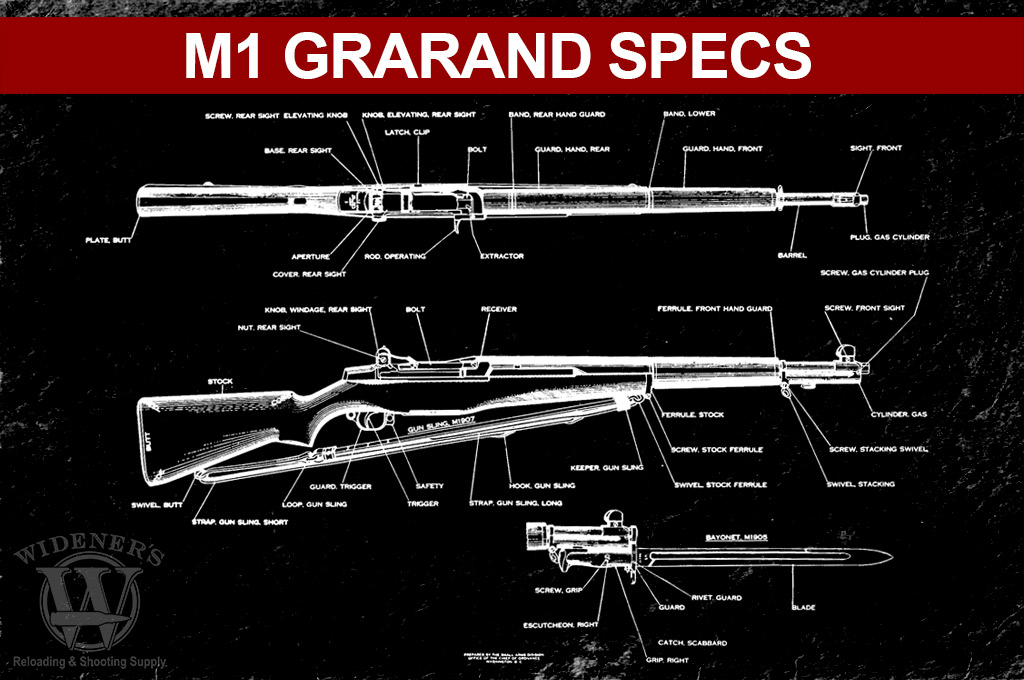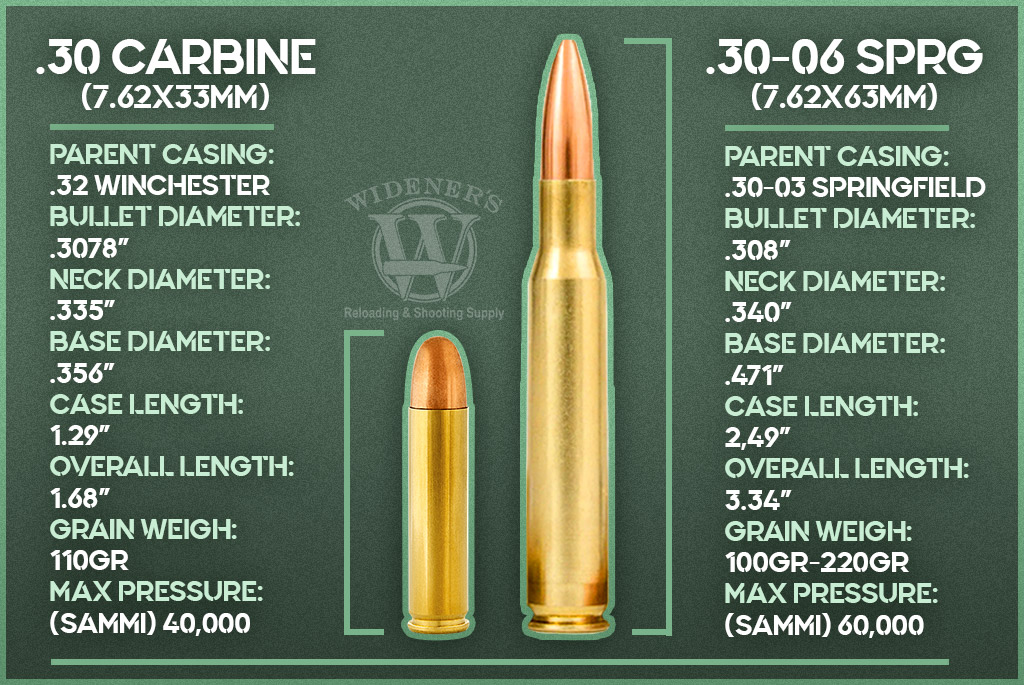

The M1 Carbine VS M1 Garand: the Batman and Robin of World War Two. Both iconic firearms were manufactured in the millions and served the United States with honor, grit, and reliability.
In this guide, we’ll compare the Garand and Carbine in detail. We’ll look at where they came from, how they were used in combat, their benefits and drawbacks, and how they inspired generations of battlefield weaponry. If you love the M1 Garand, you’ll enjoy learning about the parallels and differences compared to the infamous M1 Carbine.
A Garand History

The M1 Garand was the standard-issue service rifle of the US military from 1936-1957.
The M1 Carbine VS M1 Garand story emerged in the WW2 era. M1 Garands came first, with the carbine arriving later as the US became involved in the war in Europe. While these firearms share some mechanical similarities, their design and manufacturing journey differed.
The M1 Garand Story
John Garand began designing the M1 Garand before WW2. By all accounts, Garand was an upstanding man, a hard worker, and a talented engineer. He submitted prototypes of the firearm in the 1930s, with the rifle coming into soldiers’ hands around 1936 and widespread adoption in the early 1940s. The rifle has more capacity and a faster rate of fire than the previous M1903, leading to most branches of the military happily making the switch.
The M1 Garand received much praise at the time. The ability to fire a .30-06 round at such a rapid rate was a game-changer. The fact that the US Military equipped every man with a powerful automatic rifle left enemies trembling.
The enemy thought all American soldiers were equipped with machine guns in Europe. In the Pacific, the stopping power of the M1 Garand was famous for its ability to stomp out enemy charges. While the M1 Garand’s heft and power made for a reliable and substantial firearm, they needed something smaller for non-combatants to carry.
The M1 Carbine’s Unique History
The M1 Carbine came to life around 1940, after the military began to take the requests for a smaller pistol caliber rifle seriously. Interestingly, the final design came partially from the M2 – a rifle Winchester designed to compete with the M1 Garand (which never happened). The M2 rifle shared similarities to the Garand, and this is where some of the “big brother / little brother” talk comes from when discussing the M1 Carbine and M1 Garand.
Carbine Williams Legacy
A man known as “Carbine” Williams partially designed the M1 Carbine. Unlike Garand, Williams was a convicted murderer, moonshiner, and inmate. However, like Garand, Williams possessed a talent for gunsmithing and was instrumental in the design of the gas tappet system in the carbine. While Williams played a significant role, the M1 Carbine’s design was a team effort, including men like Fred Humeston and William Roemer.
You might think of the M1 Carbine as a “small rifle” but a more accurate understanding of the M1 Carbine is as a “large pistol.” Around the late 1930s, there was a desire to equip non-combatant soldiers with more than a 1911.
Part of this reasoning came about because German blitzkriegs often overran the front lines. When this happened, those working behind the lines (drivers, officers, medical staff, and more), had only a pistol to defend themselves.
They made about 6 million M1 Carbines – when initial estimates were that they would need only about 500 thousand. Due to the demand, a ton of subcontracting occurred to spread out the manufacturing needs, which is why you’ll find M1 Carbines marked “General Motors,” “IBM,” or “Rock-ola.”
Interesting Fact:
One of the notable aspects of the M1 Carbine’s history was how it all came together. The military had already held a trial for a light rifle, but nothing stood out. In two weeks, Winchester assembled a prototype that would catch the Army’s eye and play a significant role in getting the “OK” to manufacture a few million.
You can check out this video on the M1 Carbine for more interesting details.
M1 Carbine VS M1 Garand: Operations And Specs

M1 Carbine VS M1 Garand: You can think of the M1 Carbine (Top) as a mini version of the M1 Garand (Bottom).
Let’s have a look at some of the specs comparing the M1 Carbine VS M1 Garand. Sometimes, one of the best ways to understand a weapon is to look at the numbers. While numbers aren’t always flashy, they tell a story.
Here’s a side-by-side look at some stats for both rifles. Of note, you’ll see that the carbine was, in many cases, half the overall weight of the M1 Garand.
| Weapon | Years deployed | Caliber | Range | Magazine Capacity | Barrel Length | Overall Length | Weight empty |
| M1 Carbine | 1941-forward | .30 Carbine | 300 Yards | 15 initially | 17.75″ | 35.6″ | 5.2 lbs. |
| M1 Garand | 1936-1957 | .30-06 | 500 yards | 8 rounds | 24.00″ | 43.5″ | 10 lbs. |
M1 Garand Operations
The M1 Garand is a gas-operated semi-automatic rifle. It features a unique en bloc clip where the rounds feed into an internal magazine. The M1 Garand came in several variations, including the M1D sniper variant and a (much later) 7.52 NATO variant – it was also compatible with all sorts of attachments, such as a grenade launcher.
Eventually, the M14 rifle would replace the Garand. If you’re curious, you can read our comparison between the M1 Garand and the M14.
M1 Carbine Operations
The M1 Carbine is also a semi-automatic gas-operated carbine. Aside from having a similar look to the M1 Garand and some parallels in design, the two rifles operate in different lanes. Consider the difference between a well-built pickup truck and a reliable daily driver. Where the Garand was about power and function, the carbine was more about maneuverability and ease of use.
The carbine was light, easy, and reliable. One of the notable features of the M1 Carbine includes the sling system. There is a slot on the stock where the sling loops around an oil tube, allowing soldiers quick access to lubrication if needed.
The rear flip sight had two settings: 100 meters and 300 meters. The front fixed front sight is fixed. Later, they added a fully adjustable rear sight; however, many thought this was overkill – the cartridge wasn’t an ultra-long-distance shooter; it was designed to offer something more usable than a 1911.
Note: Late in the war, an “M2 Carbine” had a 30-round magazine and a fully automatic action. There were also models with M3 infrared scopes (these M3 scopes were something to see) and a folding stock.
Strengths & Weaknesses: M1 Garand

El Bestia: Weighing in at 10 Lbs, the .30-06 chambered M1 Garand is the definition of ruggedness.
The M1 Garand ranks among the most beloved firearms in history. It’s a great rifle that many soldiers respected. Sometimes it’s easy to see history through rose-tinted glasses – however, as a counterpoint, it is also easy to misjudge the effectiveness of past firearms by today’s standards.
As we look at the benefits and drawbacks of the M1 Garand, let’s try to view the rifle through the eyes of the soldiers on the ground at that time.
Benefits Of The M1 Garand:
- Rapid rate of fire: For the time, the M1 Garand could put a lot of firepower downrange.
- Reliability: The M1 Garand held up in the cold, plus swamps, deserts, and jungles. The design of the M1 Garand served as inspiration for the AK-47 (a reliability legend).
- Less overall fatigue: Soldiers could sustain a higher rate of fire for longer than they could with a weapon such as the M1903.
Downsides To The M1 Garand:
- The capacity: The 8-round capacity left something to be desired, so it was no surprise this was one of the significant changes when the military switched to the M14. (There was also the matter of reloading the rifle. It takes some practice to avoid getting chomped by the infamous Garand Thumb)
- The ping: While a legendary sound today, during battle, some soldiers worried that the “ping” sound when the clip ejected would tell enemies they were out of ammunition.
- The size of the rifle: The size of the Garand wasn’t a true “con,” but it was a limiting factor for specific jobs (paratroopers), which is one reason the M1 Carbine became popular.
Strengths & Weaknesses: M1 Carbine

El Bebe: The M1 carbine is lightweight with low recoil, making it a perfect upgrade for the standard military sidearm.
There were more M1 Carbines produced than there were M1 Garand’s – this should tell you something about the admiration and demand for these guns. While there are a few downsides to the carbine, many complaints against this firearm come from those who might not fully understand the weapon.
Benefits Of The M1 Carbine:
- Variations: the M1 Carbine was the tactical carbine of its time. If you could think of the modification or variation, there was a good chance the M1 Carbine had it. These variations include the later M2 Carbine, which was full-automatic with an extended mag, the M1A1 with a side-folding stock for paratroopers, and many other gadgets, such as the early infrared scope and the advanced rear sights.
- Portability: The firearm was easy to carry. Also, its 15-round capacity meant that it wasn’t too hard for soldiers to bring a few extra magazines and feel like they had a nice bundle of firepower.
- Ease of use: The M1 Carbine was partly designed to make non-combatant soldiers more effective. It was common for cooks, drivers, and medical staff to carry them.
Downsides Of The M1 Carbine:
- Magazines: The magazines weren’t known to hold up very well, leaving many soldiers carrying a few extras just in case.
- Design of the safety: The original safety design was very similar to the magazine release, making it easy for soldiers to mistake the two. They changed the safety to a switch style on later models to avoid this potential hazard.
- Power (sort of): One of the later issues with the M1 Carbine wasn’t so much a problem with the weapon. Instead, it was a problem with how people used it. Some tried to push this firearm to do more than it could. The carbine didn’t provide enough pop or range in these more robust tasks.
Ammo Considerations

.30 Carbine VS 30-06: The .30 Carbine cartridge sits in between a rifle and a pistol round in terms of size and performance.
The M1 Garand carried the torch for the M1903 when it came to the infamous .30-06 Springfield. One could argue that the continued fame (even today) of the .30-06 is due to its track record with firearms like the M1 Garand.
The M1 Garand was built for .30-06; however, much later in the Garand’s life, the transition began to the 7.62×51 NATO. The military was already phasing out the Garand for the M14, and then the M16, so the 7.62 NATO Garands were never widely used – there was a relatively small batch of them manufactured in the 60s. Let’s talk about the M1 Carbine’s ammunition.
While the 30-06 went into use before the M1 Garand, the M1 Carbine designers gave it its own ammunition.
Indeed, the .30 Carbine cartridge was built with the M1 Carbine in mind. One of the building blocks for the .30 carbine was the 32 Winchester self-loading cartridges used in the 1905 rifles. They took that .32 down to the .30 caliber size it became.
Now, the .30 carbine fires a 110-grain bullet at about 2000 feet per second. This is a good time to discuss the power of the M1 Carbine.
When people view the M1 Carbine, they typically stand on one of two hills: Handgun hill or rifle hill. If you stand on “handgun hill,” you’ll likely appreciate the .30 carbine for what it was designed to be – basically, a magnum pistol cartridge placed in a platform with more range, accuracy, and ease of use.
However, if you stand on “rifle hill,” you might think the M1 Carbine is “underpowered,” and underperforming. So we see, as with many conflicts in life, it’s all about perspective.
Conclusion: M1 Carbine VS M1 Garand

The M1 Carbine is a seriously fun rifle to shoot, but its minimalist options make it more of a one-trick pony.
The M1 Garand and the M1 Carbine are, in a way, children of USA weaponry – and as it goes with children, it’s nearly impossible to pick a favorite. While comparing these rifles is interesting, it’s probably prudent to point out that these weapons were never in competition. If you’re considering purchasing one, you probably already have a good reason as to why.
Sometimes less is more, and the M1 Carbine embodies that mindset. It’s a minimalist rifle with minimalist options, albeit good ones. Its weight, interchangeable magazines, and low recoil make it a lot of fun to shoot. If you load it with soft-point ammo, you could make a strong argument for using it as a hunting and home defense weapon.
The M1 Grarand has always enjoyed prestige with collectors, along with a price tag to match. In recent years, the M1 Carbine has become more of a desired item for collectors, and prices at gun shows have risen substantially. If you can only have one, the M1 Garand makes more sense as a usable investment, as long as you’re ok with paying a bit more to acquire it.
The M1 Garand is a rugged, powerful, primary battlefield weapon. The M1 Carbine designers made it as an upgrade to the 1911, allowing everyone to effectively shoot back if the fight came to them. I’ll say (and I think you’d agree) that both firearms performed their jobs with class and courage in the hands of our brave men and women.
If you liked this discussion, take a look at this guide on the differences between a carbine and a rifle.


